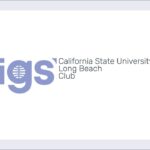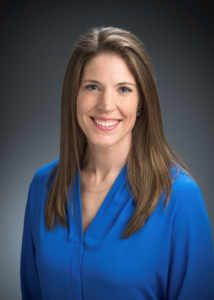
Engaging younger members, nurturing diversity and communicating the benefits of geosynthetics in tackling global challenges should be key foci for the industry, according to IGS North America President Elect Professor Kristin Sample-Lord.
Here, she shares her priorities for her upcoming role as Chapter President and looks ahead to GeoAmericas 2024.
Please tell us a bit about your relationship with the IGS and the geosynthetics industry.
I’ve been involved with the IGS since about 2019. A colleague had previously attended an IGS Educate the Educators (EtE) event through IGS North America (IGS NA) and she had many wonderful things to say about the workshop. I wanted to find a way to incorporate more geosynthetics in engineering courses, so when I saw another EtE was being offered in 2019, I jumped at the chance to attend, and this led to me getting more involved with the IGS.
I ran for an IGS NA board position the very next year as I wanted to do more to contribute to the IGS mission and took on the role of Vice President – University Outreach. This year I was elected President-Elect of IGS NA.
Outside the IGS I am an Associate Professor and Acting Department Chair in the Department of Civil and Environmental Engineering at Villanova University in Pennsylvania, USA. I am also part of the research faculty for the Villanova Center for Resilient Water Systems, and lead research programs on containment and green infrastructure.
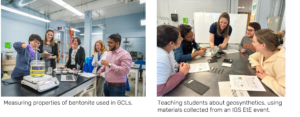
You will be IGS NA’s new President from early 2025. What are your aims for your two-year tenure?
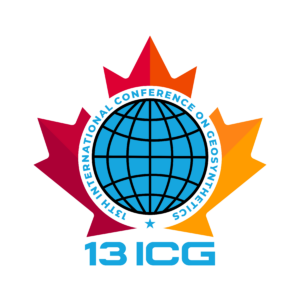 A major priority will be successfully delivering the 13th ICG event (Montreal 2026) that is inspiring, modern, and a valuable networking opportunity for young and established IGS members from around the world.
A major priority will be successfully delivering the 13th ICG event (Montreal 2026) that is inspiring, modern, and a valuable networking opportunity for young and established IGS members from around the world.
I am also excited to continue to develop and grow our Testing Innovation Fellowship Program, which is jointly supported by the Geosynthetic Institute (GSI), IGS North America, and ASTM Committee D35 on Geosynthetics. The program is aimed at transitioning geosynthetics-related research to ASTM International standards and increasing student engagement in our professional organizations.
How has the geosynthetics industry changed in the North America region and how do you see it developing?
There has been an increased focus on sustainability across the industry. The establishment of the IGS Sustainability Committee and the recent development of the Sustainability Benefits Calculator is a great step forward in this regard. These efforts by the IGS will resonate strongly with our future engineers who are now graduating with increased exposure to sustainability concepts and designer mindsets that prioritize sustainable construction and resilient infrastructure.
What are the challenges and opportunities for the industry in the North America region over the next few years?
Developing a future workforce that is educated in the appropriate use and benefits of geosynthetics will continue to be a challenge. We need to continue adding younger members, supporting diversity goals, and activating members sooner and more frequently. We cannot rely on older association and professional society models in which you joined things that were part of your work. We need people to know that they are needed here, that they are heard.
In education, we should not just look at colleges, but also school-aged children. This means we need to consider more hands-on exercises to support the larger lectures and initiatives we offer in support of teachers and professors.
We also need to look quite seriously at how funding is made available to researchers. It is hard to attract new professors and PhD students to develop and sustain a deeper focus in geosynthetics when they have significant pressure to bring in money to support their work.
And, we have to acknowledge a lot of change in the industry. The IGS has turned 40. Many of the original and very early members are still involved but retiring or transitioning to late-stage career roles so we need to ensure we retain their knowledge while engaging younger members to take up these roles.
Your Chapter is hosting GeoAmericas 2024 in April next year. Why should people attend?
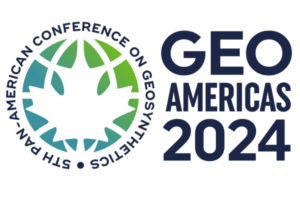 Regional conferences provide an invaluable opportunity for technical exchange among practitioners, geosynthetic companies, academics, and students who might not be able to attend events outside of these regions. GeoAmericas 2024, which will have a deep program in sustainability, energy, and transportation, had nearly 250 abstracts accepted, more than half of which have been from outside IGS North America’s area of operation (Canada/US), so we’ll have a strong showing from the IGS’s Pan-American chapters.
Regional conferences provide an invaluable opportunity for technical exchange among practitioners, geosynthetic companies, academics, and students who might not be able to attend events outside of these regions. GeoAmericas 2024, which will have a deep program in sustainability, energy, and transportation, had nearly 250 abstracts accepted, more than half of which have been from outside IGS North America’s area of operation (Canada/US), so we’ll have a strong showing from the IGS’s Pan-American chapters.
The event also serves as an essential connection point in Eastern Canada to the 13th ICG in Montreal in September 2026.
What else is going on in IGS North America at the moment? What are its priorities and plans over the next few years?
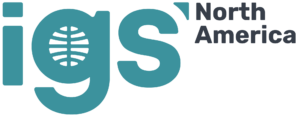 IGS North America has been very busy. We are launching a new chapter website, working on GeoAmericas 2024 and the 13th ICG in 2026, discussing our next couple of EtEs, opening a strong dialogue with the IGS Diversity Task Force to enhance our programming in line with the Task Force’s goals, growing student membership rapidly, increasing our interaction with related organizations (like the Canadian Geotechnical Society), and expanding the geosynthetic research fellowship program we run jointly with the Geosynthetic Institute and ASTM International Committee D35 on Geosynthetics. It’s a very interesting time to be involved.
IGS North America has been very busy. We are launching a new chapter website, working on GeoAmericas 2024 and the 13th ICG in 2026, discussing our next couple of EtEs, opening a strong dialogue with the IGS Diversity Task Force to enhance our programming in line with the Task Force’s goals, growing student membership rapidly, increasing our interaction with related organizations (like the Canadian Geotechnical Society), and expanding the geosynthetic research fellowship program we run jointly with the Geosynthetic Institute and ASTM International Committee D35 on Geosynthetics. It’s a very interesting time to be involved.
We are also furthering our awards program. One of the first acts was the Board’s approval of Honorary Chapter Membership for Dr. Jorge Zornberg and Dr. Richard Bathurst, both of whom are former IGS Presidents. They are only the fourth and fifth honorary members in our Chapter’s 35-year history.
We will have other awards coming up, particularly in support of Young Members and Students. Our members contribute on so many levels, it’s important to acknowledge that impact.
How has the IGS evolved since you joined?
The recent establishment of the IGS Diversity Task Force is very exciting, and a critical path forward. It has laid out clear goals that will support more diverse representation at major events and in leadership roles. With less than 20% of IGS members identifying as female, there is so much opportunity for growing and diversifying membership. I am excited to support this new initiative and watch the evolution of our community as a result.
What are the current key priorities for the geosynthetics industry as a whole, and why?
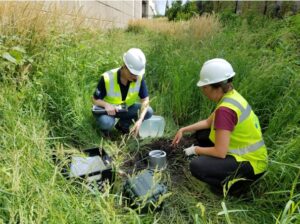
Actively engaging students and young practitioners will be critical to ensuring a future workforce with technical capabilities and appreciation of geosynthetics as engineering materials. Another priority will continue to be clear messaging to the public about how geosynthetics play an integral role in addressing global challenges, climate change adaptation, and sustainable development goals.
What do you enjoy the most about being involved in the IGS?
The IGS community offers a wealth of knowledge and opportunities for involvement. The focus on education and supporting young members sets the IGS apart from many other professional organizations. I’m also really looking forward to seeing everyone again at GeoAmericas 2024 in Toronto.
Do you have any messages for members?
Make an effort to encourage junior colleagues and students to join the IGS. A personal invitation goes a long way, especially when their peers may not be members.
A few years ago, I was interested in becoming more involved in IGS and potentially serving in a leadership role, but I was worried that I was too junior in my career stage to be considered or make a meaningful impact. That could not have been further from the truth. Long-time members of the IGS encouraged my increased involvement, were excited to hear my ideas, and valued my opinions even though I was ‘newer’ to the organization. So please take a moment to personally reach out to a colleague and invite them into the IGS community.
For more about IGS North America, visit the Chapter website here.




